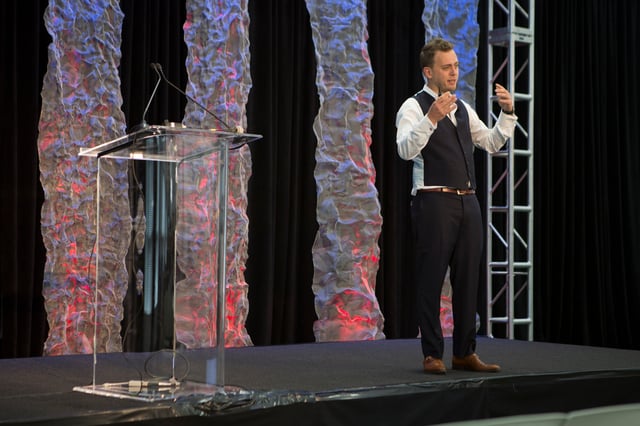
Last month, we at the Symphony Software Foundation, were proud to host the Open Source Strategy Forum in New York City. We were joined by over 300 industry professionals from financial services, financial technology, open source, and beyond. With keynotes delivered by whurley (Goldman Sachs), Amber Baldet (J.P. Morgan), John Stecher (Barclays), Nithya Ruff (Comcast), Joe McCann (NodeSource), Jim Jagielski (CapitalOne), and others, complete with 30+ talks, it was an incredibly valuable day of content and networking. But most importantly we built the identity of a new Community, one that will drive open innovation in the industry. Thanks to all of you who joined us there.
I kicked off the event by touching on the opportunity before us. There is a powerful intersection of technology, policy, and culture that occurs when we bring together financial services and the proven methodologies and delivery of open source. I, and our foundation, are pragmatic. I touched on the the Why, the What, and the How of what we need to do here.
We fundamentally live in a platform economy, and financial services organizations are already seeing some of the value of harnessing and consuming open source platforms. Many organizations are able to deliver 50% - 70% of a solution by integrating proven open source platforms, and then building the solution-specific pieces on top of that. This is great, but I don’t think it is enough to realize the full potential of open source in financial services.
I want us to move to a two-way continuous value cycle in which the platforms and the ecosystem are continually delivering value to each other. We have already seen this in other industries, such as telecoms, networking, automotive, and operating systems, where platforms are created and add value but then organizations can further into the formation of those platforms. We believe there is enormous potential for doing this in the financial services market.
While I would like to suggest this is simple, it isn’t. It requires a careful combination of technology (such as our Open Developer Platform, security, and scale), policy (such as open source readiness, contribution policies, and copyright management), and culture (building strong communities inside of organizations that connect in a healthy way to outside communities).
While there is lots to do, this is not rocket-science. It requires collaborative leadership and focus, and the Open Source Strategy Forum was where we really started exploring this opportunity in more depth with the collaboration of our colleagues across these different industries. This was tremendously valuable.
It is an exciting time and the disruption and value opportunity for open source in financial services is not a matter of if, but when. We hope you join us for the ride.
See my full keynote:

.png)